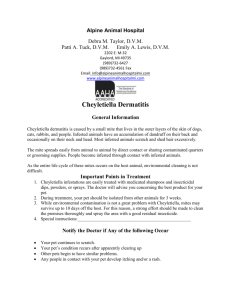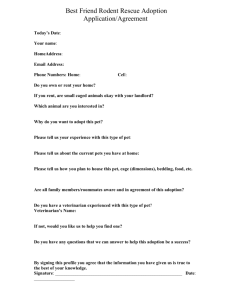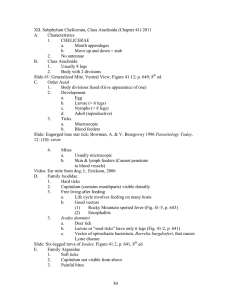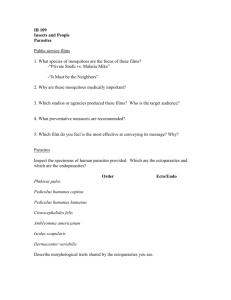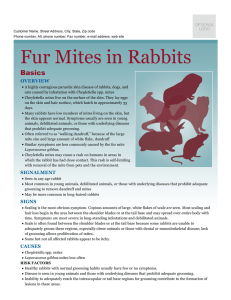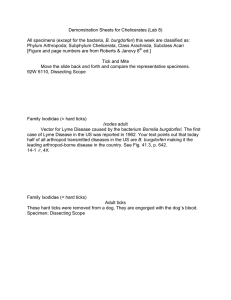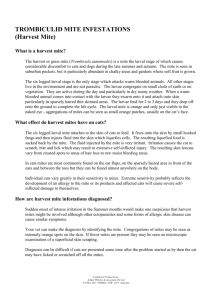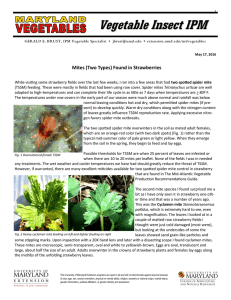Cheyletiellosis - Briarpointe Veterinary Clinic
advertisement
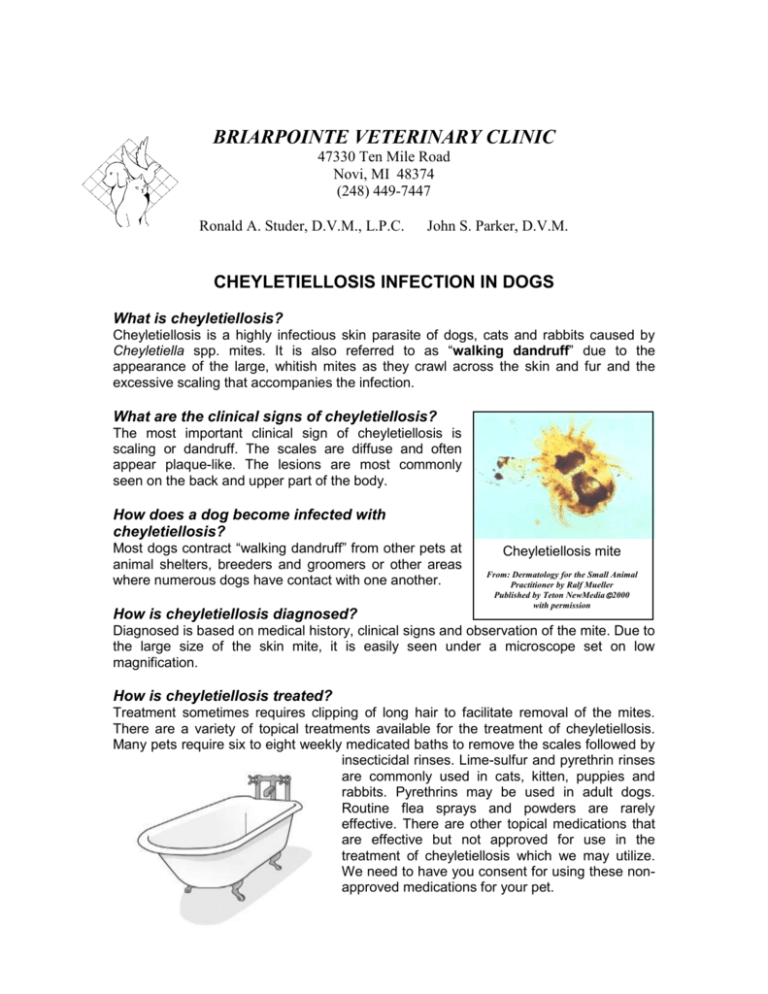
BRIARPOINTE VETERINARY CLINIC 47330 Ten Mile Road Novi, MI 48374 (248) 449-7447 Ronald A. Studer, D.V.M., L.P.C. John S. Parker, D.V.M. CHEYLETIELLOSIS INFECTION IN DOGS What is cheyletiellosis? Cheyletiellosis is a highly infectious skin parasite of dogs, cats and rabbits caused by Cheyletiella spp. mites. It is also referred to as “walking dandruff” due to the appearance of the large, whitish mites as they crawl across the skin and fur and the excessive scaling that accompanies the infection. What are the clinical signs of cheyletiellosis? The most important clinical sign of cheyletiellosis is scaling or dandruff. The scales are diffuse and often appear plaque-like. The lesions are most commonly seen on the back and upper part of the body. How does a dog become infected with cheyletiellosis? Most dogs contract “walking dandruff” from other pets at animal shelters, breeders and groomers or other areas where numerous dogs have contact with one another. How is cheyletiellosis diagnosed? Cheyletiellosis mite From: Dermatology for the Small Animal Practitioner by Ralf Mueller Published by Teton NewMedia2000 with permission Diagnosed is based on medical history, clinical signs and observation of the mite. Due to the large size of the skin mite, it is easily seen under a microscope set on low magnification. How is cheyletiellosis treated? Treatment sometimes requires clipping of long hair to facilitate removal of the mites. There are a variety of topical treatments available for the treatment of cheyletiellosis. Many pets require six to eight weekly medicated baths to remove the scales followed by insecticidal rinses. Lime-sulfur and pyrethrin rinses are commonly used in cats, kitten, puppies and rabbits. Pyrethrins may be used in adult dogs. Routine flea sprays and powders are rarely effective. There are other topical medications that are effective but not approved for use in the treatment of cheyletiellosis which we may utilize. We need to have you consent for using these nonapproved medications for your pet. Can I get cheyletiellosis form my pet? You can get cheyletiellosis from an infected pet. The infection is self-limiting since you are an accidental host and complete resolution occurs within three weeks after the mite has been removed from the pet and environment. What is the prognosis for cheyletiellosis? Cheyletiellosis has an excellent prognosis for complete resolution provided you follow our treatment recommendations. It is important to thoroughly clean all bedding or other surfaces that an infected pet has had contact with. Recurrent infections indicate contact with an infected carrier (some of which may have no clinical signs) or an unidentified source of mites such as untreated bedding. Edited by John S. Parker, DVM July, 2007 © Copyright 2005 Lifelearn Inc. Used with permission under license. February 12, 2016
